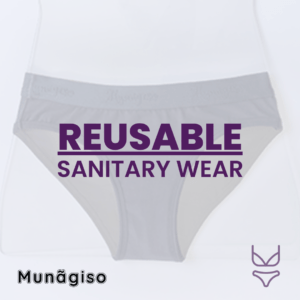Initially developed by the DuPont Corporation in the 1920’s and used for military parachutes in World War 2, nylon was integrated into 25% of the textile market by 1945.
Nylon is most well-known for stockings, but can be made into multiple types of fabric including chiffon and taffeta. Continue reading to find out more about nylon and how it is currently used within the industry.
Overview
Nylon is the name for a family of polymers that are widely used within the textile industry within a range of products. Nylon is 100% synthetic, similarly to fabrics such as polyester and acrylic, and is made from petrochemicals.
It was originally developed with the intention of becoming a synthetic silk replica, however, the fabric alone had issues with runs and tears (despite being manufactured specifically to avoid this). This is why nylon is often used in combination blends with other fibres – as it has the ability to enhance other materials such as cotton/spandex/polyester with qualities such as stretch and resistance – whilst losing its negative qualities such as tearing.
Types and production of nylon
As nylon is the generic name for several synthetic polyamides (fibres obtained by spinning polymers), there are several types of nylons. The names of nylons relate to the quantity of carbons in the structure – nylon 6 and 66 are two of the most popular types of nylon used in the textile industry because of their beneficial properties.
Nylon 6
Nylon 6 is made from a single type of monomer called caprolactam which has a higher resistance threshold, it’s also quick to absorb moisture, strong, durable, easy to dye and very lightweight.
Nylon 66 (6,6)
Nylon 66 consists of hexamethylene diamine, six carbon atoms and adipic acid. It has great colour-retention and is very resistant to abrasion. Nylon 66 also does not wear down in the sunlight as easily as other nylons.
It is also low cost and easily producible. This type of nylon is better suited to industrial products however, so the majority of nylon we see on the market is likely Nylon 6.
Nylon 46
This polymer is only produced by the international corporation DSM under the name Stanyl. It is not commonly used in fabrics, and instead can be found in products such as engines and air coolers.
Nylon 510
Intended as a Nylon 66 alternative, however proved to be too expensive for mass production.
Ripstop
Ripstop nylon is durable, lightweight, and strong. It is not usually used within the fashion industry, rather it is frequently used for parachutes, hot air balloons as well as materials designed for the outside such as sleeping bags.
Ripstop nylon is a blend, usually containing either nylon 6 or 6,6 (or both). This nylon fabric has a criss-cross grid effect created by crossing different fibers over and under each other (like a basket weave) to increase durability.
Kevlar
Kevlar is the material used in bulletproof vests, and is also known for being cut and heat resistant. Kevlar can be found in personal protection equipment in industrial industry products such as gloves that provide protection from injuries.
Production
Nylon consists of long chains of carbon-based molecules called monomers, and the majority of nylon types are extracted from hexamethylenediamine in crude oil (petroleum). The nylon production process is:
- Monomer: diamine acid is extracted from crude oil. The acid is combined with a substance called adipic acid and when put together, they form a polymer (known as nylon salt) which is crystalized.
- Liquidizing: the nylon salt is heated to a high temperature to turn it into a liquid.
- Spinning: once the salt has been turned into a molten liquid it is pushed through a spinneret which has lots of tiny holes. This forms very long strands which immediately cool and turn into thin nylon fibers.
- Stretching: the fibers are loaded onto bobbins and are stretched to improve their elasticity and strength. After this the fibers are wound onto another bobbin through a process called drawing.
- Spinning: the nylon is then spun into fabric, the fibres are then mixed with other fibers, like cotton, or used to create 100% nylon.
- Finishing: the last stage is to add colour to the fabric so that it is ready to be shipped and made into garments at manufacturers around the world.
Where is nylon made?
Nylon was originally developed in the United States and remained there until the second half of the 20th century. The US continued to be the leaders in production until the 1980s, however as the desire for the fabric grew, production started to move overseas.
The current largest producer of nylon is China – however recently there has been a decline in the production of the fabric here. Many other asian countries such as Pakistan, Indonesia and India also produce nylon on a large scale, and the US still produces nylon to this day.
Nylon fabric properties
Nylon was developed to be the ‘textile of the future’ and widely used in stockings because it was said to be run resistant. The original name was ‘No-Run’, however after finding out that nylon was actually very prone to running, the name was developed into what we now know as nylon.
Today, nylon is not usually used by itself due to its high tendency to run. Instead it is blended with other materials to increase their qualities whilst losing the negative ones it possesses itself. Some of nylon fabric properties include:
Strength
Nylon is known for being extremely strong, it is suggested that the tensile strength of nylon is greater than a steel filament of the same weight (tensile strength is the amount of pressure it can be put under before it breaks).
Nylon, whilst being strong, will tear easily due to its nature. Care must be taken when wearing 100% nylon material.
Stretch
Nylon is also extremely elastic, with the ability to bounce back into its original shape with ease. There are no other fibres on the market that have the same elastic properties of nylon, which is why it is so beneficial to the textile market, as it can be blended with fabrics such as cotton to create amazing stretchy garments.
Nylon is widely used within activewear for this very reason, nylon is able to retain its shape and stretch back, remaining close to the skin for comfort and ease of wear.
Absorbent
Another reason nylon is so good for activewear is its resistance to moisture, some nylons are non-absorbent and smooth. This makes the fibres dry extremely quickly and ensure that the garment can perform to the best of its ability.
Some nylons are absorbent, and have the ability to moisture-wick to a certain extent (similarly to natural fabrics), however the moisture will stay within the fabric.
Resilience
Nylon fabric is very resilient – it can resist dirt very well, and can resist heat, UV rays, and chemicals better than most synthetic materials, including polyester. Nylon has the ability to resist oil and bleach, so if the fabric discolours, bleach can be used to whiten it with no problems.
Nylon will not burn, however it can melt at high temperatures. Some nylons have the ability to resist melting, however these are not widespread.
Nylon is also resistant to mildew (like other synthetics) which means that it is an easy fabric to care for. It can also be used outdoors because it is so weather resilient – resistant to abrasion and molding, it is perfect for a range of products that will constantly be exposed to the environment.
Comfort
Nylon is not known for its luxuriousness, comfort or soft nature. Nylon fabric can be light and airy, however, it can also be clammy and soggy.
Nylon fabric products
The products that nylon is used within can range from ladies stockings to tents due to its versatility (both alone and in fabric blends). Some of these products include:
Undergarments
Being most well known as an alternative to traditional silk stockings – it is no surprise that nylon is used frequently in ladies and mens undergarments. Nylons continue to be worn around the globe and are recognisable for their namesake.
Nylon is also used within socks, swimwear, and other hosiery.
Athleticwear
Nylon is frequently used in athleticwear due to its stretchy properties and combined benefits when blended with moisture-wicking materials such as cotton. Garments such as sports tops, shorts and tracksuits often contain nylon of some variety.
Textiles
Nylon is also used widely outside of clothing – including products such as parachutes, umbrellas, luggage, tents, fishing nets, space suits and more.
Materials
Nylon can be made into an array of different fabrics, and is therefore used widely within the industry even if not directly listed on the label. Some of these fabrics include chiffon, organza, taffeta, voile, poplin, broadcloth, Kevlar, Gore-Tex, chenille, and velour.
Sustainable impact of nylon
Nylon is a synthetic fabric made of raw material derived from crude oils – which means that it inherently has a negative effect on the environment right from the very start of production. Crude oils are fossil fuels and the acquisition of these is very harmful to the environment.
Fossil fuel drilling and fracking have detrimental effects on ecosystems and people, especially in countries that don’t have protective laws in place. The oil industry therefore benefits heavily from nylon production, which is very unsustainable.
Nylon production also creates a great deal of waste products during its manufacturing, with large quantities of water used to create the fibres and cool them when forming the fabric. Energy is also wasted, having an impact on carbon-footprint, with production of adipic acids and nitrous oxides, which are then also released into the atmosphere.
Nylon can also retain toxic ingredients even when sold on the market, so consumers should be very careful when purchasing nylon, for both their wellbeing and the environment’s health.
Nylon is also 100% non-biodegradable due to being completely synthetic in nature. Natural fabrics such as cotton and even semi-synthetic fabrics such as rayon are biodegradable, which raises the question of what happens to nylon after it is finished with and thrown away?
The only other option available is recycling – and according to the Textile Exchange, polyamide (nylon) is much more difficult to recycle than polyester. That means the market share of recycled polyamide is much lower than that of recycled polyester (13% in 2018).
Nylon can be recycled as both pre or post consumer waste. Pre-consumer counts for processing scraps and post-consumer counts for used materials such as garments and fishing nets. Fishing net recycling is becoming a resourceful way to create garments out of waste whilst restoring ocean ecosystems – you can find out more about this specific type of recycling in our blog post about recycled fashion.
Recycling nylons can be very helpful for environmental issues currently happening, such as decreasing dependency on fossil based raw materials as it has been estimated that 70,000 barrels of oil are saved per 10,000 million tonnes of regenerated Nylon.
Some brands and retailers making commitments to replace virgin nylon with recycled fabrics include:
- H&M is committed to use only 100% recycled or other sustainably sourced materials including recycled Nylon.
- Norrona has the goal that 75% of their Nylon should be recycled in 2020.
- Prada has published their goal of converting all Prada virgin Nylon into regenerated Nylon ECONYL® by the end of 2021.
- StellaMcCartney, same as Prada, has the goal to stop using virgin Nylon by 2021 and to replace it with ECONYL®.
- Volcom is committed to increase their share of recycled Nylon to 20% by 2020.
If you would like to read other fabric blog posts from our series, you can check them out here; polyester, cotton, rayon.




